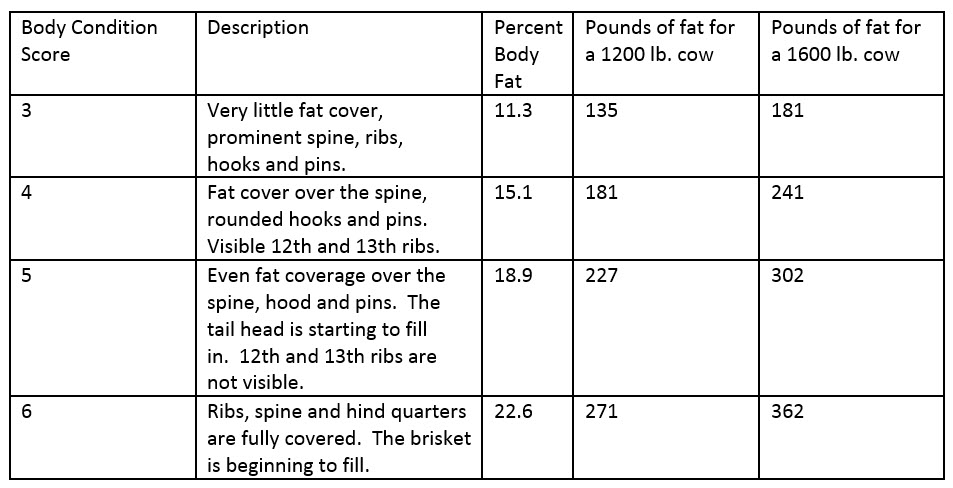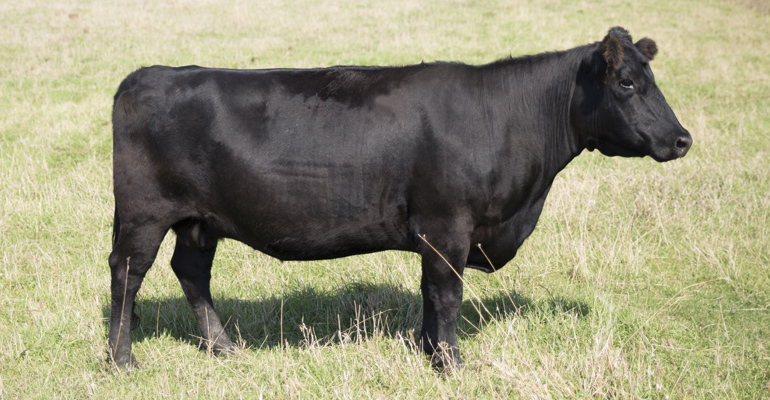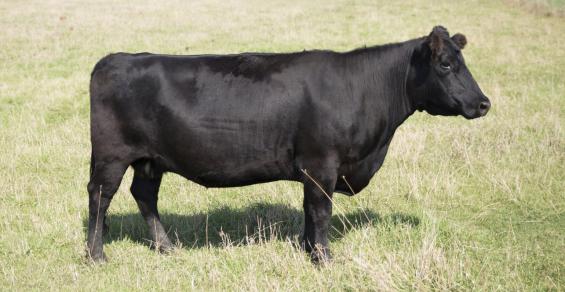Most spring calving herds are well into the calving season with busy days of tagging calves and weeks of less sleep due to those late night trips checking the calving pens. An important activity that needs to be part of the calving season is body condition scoring (BCS) the cows. Cow body condition at calving is a very useful indicator that can be used to help manage reproduction as well as forage allocations and supplementation needs. In addition, 30 and 60 days after calving we need to body condition score the cows again.
Higher milking cows may drop more body condition than lower milking herd mates. In the dairy sector we get daily milk production, but it’s probably safe to say that very few people have the time or have a crazy desire to run a beef cow into the barn and attempt to milk her. Compared to hand milking or catching calves and weighing them to estimate milk production, condition scoring the cow herd 2-3 times over the next few months is a fairly easy tool to get an estimate on milk production. This may help you identify high milking family lines in your herd that need a bit more attention when forage quality or quantity is limited.
Body condition scoring in beef cattle
Body condition scoring uses a 1 to 9 scale which gives an estimate of percent body fat of the cow. The target percent body fat for optimum reproductive performance is 19 to 22.5 percent which correlates with a BCS of 5 and 6, respectively. The table below gives a brief explanation of BCS from 3 to 6.

A previous article examined how bigger cows require more feed and it may be possible that larger cows may have higher requirements to maintain or restore body condition. Cows with a BCS of 5 or 6 will have significantly better reproductive performance than cows with a BCS of 3 or 4. In nutrition we balance diets and generate nutrient requirements using percentages. However, a cow eats pounds of feed and puts on or loses pounds of body weight. For optimum reproduction we need cows that are at least 18.9% body fat for a BCS of 5. The 1600 lb. cow requires 75 lbs. more body fat compared to a 1200 lb. cow. How many pounds of feed is needed for that additional 75 lbs. of body fat and how many more pounds of TDN and protein is required? Percentages in the diet may be the same, but pounds are what we pay for. If the plane of nutrition in early lactation is lacking, we risk losing body condition. Milk production now enters the thought process. High milking cows may need to pull from body fat to meet the nutrient demand for lactation. We need to be near a BCS 5 to achieve an optimum pregnancy rate and we only have 82 days to get a cow pregnant in order to maintain a 12 month calving interval.
Evaluating BCS again at 30 and 60 days will help alert us to the need to change forage and supplement strategy to avoid cows dropping to a BCS of 3. Regaining a BCS of 5 for cows that become a BCS of 3 will require adding 92 to 121 lbs. of body fat for the 1200 and 1600 lb. cow respectively. That is a nearly impossible task to accomplish is 82 days and we risk those cows becoming late calving cows and falling out of the herd. Higher milking ability may be a contributing factor and cow size only compounds the nutrients needed. A 1600 lb. cow will need an addition 31 lbs. of fat. Remember that we are doing this in 82 days post calving. The availability and quality of the forage provided is a contributing factor. On average to low quality forage, supplemental protein and carbohydrate will be necessary to maintain the current calving window. There is a risk that high milking cows will become late calving cows and fall out of the breeding herd.

Body condition scoring is necessary
Body scoring the cow herd at calving is a necessary management activity. We need to make sure we have animals in the proper BCS at calving and we are feeding the lactating cow sufficiently to maintain BCS at a 5 or above. Over time our cows may have become larger and a portion of the herd may have genetically changed to have higher milk production. It’s not to say big cows are better than small cows or high milking cows are better than average milking cows. Like many things, the correct scenario for your operation depends on being able to manage nutrient requirements with your available forage base.
The cow herd has and will continue to change. CRYSTALYX® Brand Supplements offer a wide variety of protein and mineral supplements that can help meet your herds production potential. The impact of cow size and potential milk production will impact your supplementation decision. Big cows are able to eat more (if it is available) but if they do lose condition it becomes a challenge to get them back in shape by breeding time. Milk production adds another factor to monitor and BCS is really the only practical tool we have. Consider using the CRYSTALYX® Beef Cow BCS App available for free on your Iphone or Android. The CRYSTALYX® Beef Cow Body Condition App is a great tool for recording BCS. It has both written descriptions and pictures that explain the different scores. Visit www.crystalyx.com for more information.




Leave A Comment